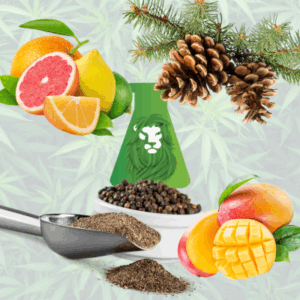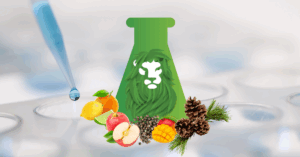How Terpene Profiles Affect the Consumer Experience
When it comes to choosing the perfect product, most consumers focus on THC or CBD percentages—but there’s another key factor that shapes the experience: terpenes. These aromatic compounds play a powerful role in the way products taste, smell, and even how they make you feel.
At CATLAB, LLC, we believe education is essential. So, let’s break down what terpenes are, why they matter, and how they influence the overall consumer experience.
 What Are Terpenes?
What Are Terpenes?
Terpenes are naturally occurring compounds found in plants, including cannabis, herbs, fruits, and even trees. They’re responsible for the distinct aromas and flavors we associate with each strain—like citrus, pine, berry, or fuel. But they don’t just affect your senses—they can also shape how your body responds.
There are over 100 different terpenes found in cannabis, each offering unique properties and effects. Think of them like nature’s essential oils—complex, functional, and deeply personal.
The Entourage Effect
Terpenes don’t work alone. They interact with cannabinoids (like THC and CBD) to produce what’s known as the entourage effect—a synergistic reaction that enhances the overall impact of the product.
For example, two products with the same THC percentage can feel completely different depending on their terpene profiles. One may offer a calm, focused high while another may feel more euphoric or physically relaxing.
Understanding terpene profiles can help consumers predict how a product might affect them—especially when paired with lab testing and transparency.
Common Terpenes and Their Effects
Here are a few of the most common terpenes found in cannabis products and how they might influence the experience:

- Myrcene
Earthy and musky, myrcene is often associated with relaxing, sedative effects. It’s found in hops, lemongrass, and mangoes. - Limonene
Citrus-scented and uplifting, limonene may boost mood and reduce stress. Common in lemons, oranges, and other citrus fruits. - Pinene
This pine-scented terpene is thought to promote focus and alertness. Found in pine needles, rosemary, and basil. - Linalool
Known for its floral, lavender-like aroma, linalool is often linked to calm, anti-anxiety effects. - Caryophyllene
Spicy and peppery, this terpene also interacts with the body’s endocannabinoid system, making it unique in how it may relieve inflammation and stress.
Why Terpenes Matter for Product Quality
At CATLAB, LLC, we use detailed terpene analysis to help consumers make better choices. The presence and concentration of certain terpenes can be an indicator of freshness, strain integrity, and expected effects.
Whether you’re a first-time consumer or a seasoned enthusiast, paying attention to terpene profiles can take your experience to the next level.
By choosing products based on terpene content—not just potency—you’re able to tailor your experience more precisely and find what works best for your body, your mood, and your goals.
How to Read a Terpene Profile
When browsing lab results, you might see terpene profiles listed as percentages. These small numbers pack a big punch. Even a 1% concentration of a dominant terpene can have a noticeable effect on how you feel.
Look for lab-tested products with a terpene breakdown so you can better understand what you’re consuming. At CATLAB, LLC, we prioritize transparency by offering full profiles on all our tested products.
The future of cannabis isn’t just about THC—it’s about the full spectrum of what the plant can offer. Terpenes are the unsung heroes, shaping aroma, flavor, and effect in meaningful ways.
Want a more personalized experience? Start by exploring terpene profiles, and discover how much they can enhance your journey.
Follow CATLAB, LLC for more science-backed insights and product updates. Let’s elevate the experience—together.

